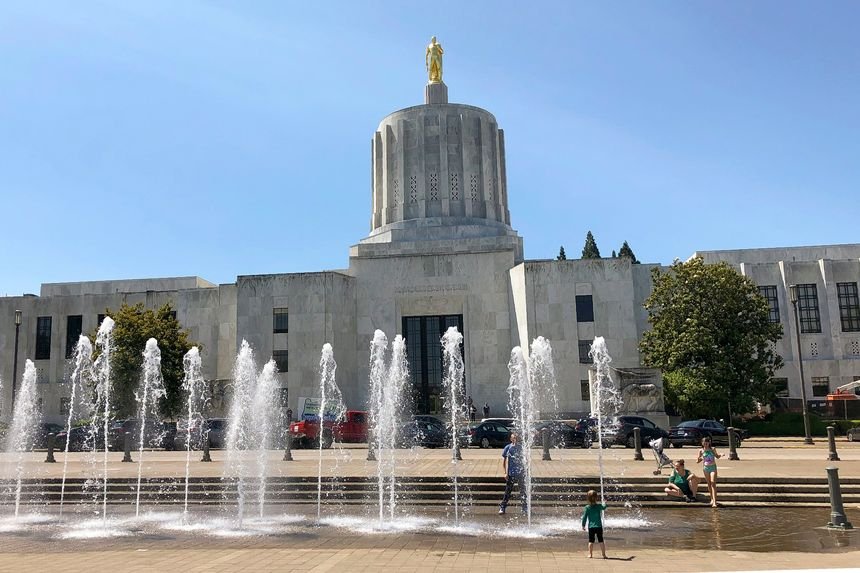Last year, the Supreme Court invalidated racial gerrymandering and opened up a new method for drawing electoral maps. Now that we’re in the midst of an election cycle, it’s time to revisit what this ruling means politically and legally.
The “gerrymandering” is a term that refers to the process of manipulating electoral districts in order to favor one political party or candidate over another. The term comes from a reference in 1812 by Elbridge Gerry, who was then vice president of the United States, to redistricting carried out by Massachusetts Governor Elbridge Gerry.
Salem, Oregon’s state capitol building.
Associated Press photo/Andrew Selsky
In the 2021 redistricting process, Democrats have set up a nationwide legal machine to combat gerrymandering. At least, that’s how it’s being marketed. This spring, famous Democratic attorney Marc Elias said, “We are prepared and ready to employ every legal weapon available to ensure that new maps do not unjustly penalize voters.”
He meant that Democrats would use every legal weapon at their disposal to ensure that fresh maps benefit them. Mr. Elias’ legal firm participated in Oregon’s redistricting process this week, not to dispute, but to defend, a gerrymander.
Democrats control Oregon’s legislature and governorship, and a group of citizens filed a lawsuit in state court last week calling the legislature’s new map a “clear, flagrant political gerrymander.” After the 2020 Census, the state acquired a House seat. In a regular year, Democrats are expected to win five of Oregon’s six congressional seats, according to the lawsuit.
In the 2020 Oregon congressional elections, Republicans received roughly 42% of all votes cast. Even if the GOP won two of the six seats, it would be under-represented under the “proportional” criterion that leftists have used to assess the fairness of legislative maps in Republican-controlled states.
In its Redistricting Report Card, the Princeton gerrymandering project, which is led by academics who are rarely Republican enthusiasts, rates the state’s congressional plan for 2021 a “F.” “The Democrats have a significant lead. The report card states, “Advantages incumbents.”
Mr. Elias’ legal team is fighting to keep that edge, alleging that the map is fair. The brief from Elias Law Group and Perkins Coie says that “House Republicans refused to engage productively with House Democrats in creating redistricting proposals” to explain the Oregon Legislature’s deployment of a partisan map.
That’s just funny. If bipartisanship fails in a Republican-controlled state, leftist attorneys would not see it as a reason for Republicans to take over redistricting. This court battle isn’t about “fair” maps; it’s about solidifying Democratic dominance.
And that, for the most part, is how life in our constitutional republic goes. Drawing maps is a political act. While governments may attempt to prevent gerrymandering, voters should penalize their legislators in the following election if they go too far. Legislative gerrymandering may be broken by political and demographic shifts, and certain politicians are elected statewide.
However, as the 2021 redistricting cycle is demonstrating from New York to Illinois to Oregon and beyond, the Democratic and media framing of gerrymandering as a Republican attack on democracy is just absurd. Gerrymandering hasn’t become any less common because of partisan sanctimony.
Mark Penn, a Democratic pollster, is interviewed by Paul Gigot.
Dow Jones & Company, Inc. All Rights Reserved. Copyright 2021 Dow Jones & Company, Inc. 87990cbe856818d5eddac44c7b1cdeb8
The print issue of the October 22, 2021, was published.
The “gerrymandering map” is a visual representation of the “legal gerrymander flip”. This graph shows how many congressional districts are in each state. The more red, the more Republicans districts there are.
Related Tags
- is gerrymandering legal
- gerrymandering in texas
- gerrymandering in the united states
- examples of gerrymandering
- gerrymandering example 2020


